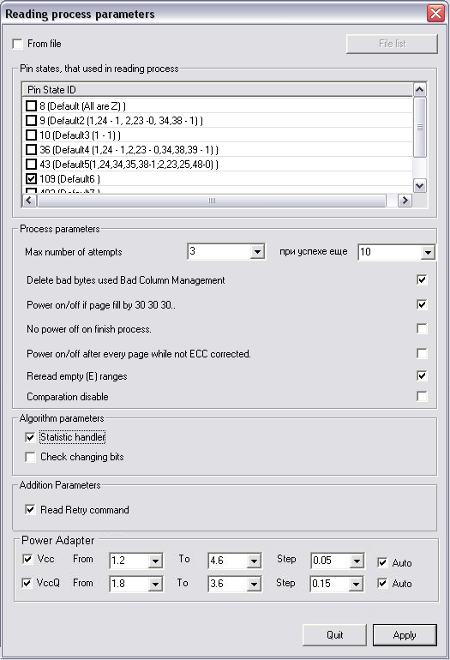|
The PC-3000 Flash is a hardware-software system intended for recovering 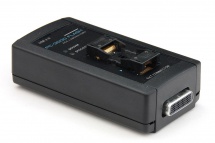
data from all NAND based devices (USB Flash Drives, SD, MS, xD, MMC, CF,
VoiceRecorder, iPhone, etc.) in such cases where there is no access through
the authorized drive interface.
Data recovery from USB drives, memory cards, mobile storage devices
The PC-3000 Flash is based on our own "know-how" technology of getting direct access to Flash memory microchips. The microchip is desoldered from the storage device and read by our special device – the "Flash reader" – providing access to data when the controller is damaged. This technology greatly increases the chances of successful data recovery even when the storage device is physically damaged.
The PC-3000 Flash contains an up-to-date large memory chip database that allows you to identify and read microchips in automatic mode. Complicated stack organizations which consist of several parts are automatically detected by the PC-3000 Flash as well.
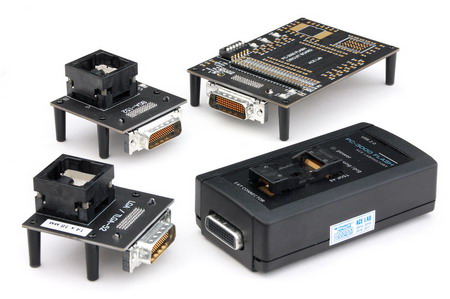
NAND microchip technology is constantly changing: microchips are becoming more high-tech, new principles of functionality are created and new requirements and protocols for microchips appear, for example, TLC microchips. Because of this constant change, the Flash Reader software is continuously updated to provide support for new microchips in accordance with the strict requirements necessary for correct functionality.
The PC-3000 Flash is capable of automatically checking and downloading the latest libraries via the Internet:
- Memory chip library
- ECC algorithm library
- XOR library
- Library of Analysis algorithms, preparation and research methods
- page format library
- supply circuit library
If there are any new resources, they are downloaded from the ACE Laboratory server and updated.
In addition to a great variety of manual and visual modes, the PC-3000 Flash has automatic data recovery methods which help solve both simple and difficult cases. For example, in most cases, Complex analysis allows for making all prior operations automatically and get access to user data.
With the PC-3000 Flash, you can recover data with "one-click" using the PC-3000 Flash Global Solution Centre. It is a dream come true for data recovery specialists!
The Global Solution Centre is updated daily!
The list of controllers supported by "Global Solution Centre" can be reviewed here
THE PC-3000 Flash Kit
- PC Flash Reader - 1pcs
- LGA/TLGA-52 adapter (14x18) - 1pcs.
- BGA-152 adapter - 1 pcs.
- Circuit Board adapter - 1 pcs.
- Connectors Set - 1 pcs.
- USB 2.0 Defender Cable - 1 pcs.
- PC-3000 Flash Software - 1 DVD
-
User Manual - 1 pcs. 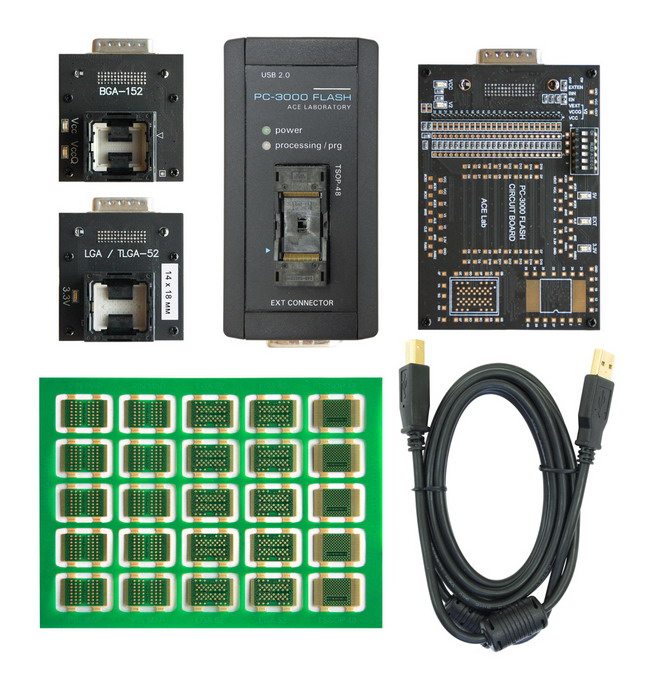 The PC-3000 Flash Kit 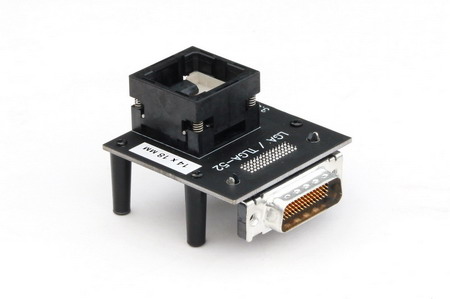 LGA/TLGA-52 adapter (14x18) 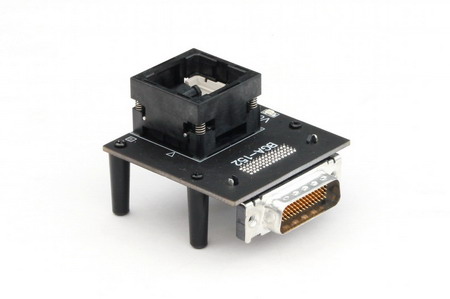 BGA-152 adapter 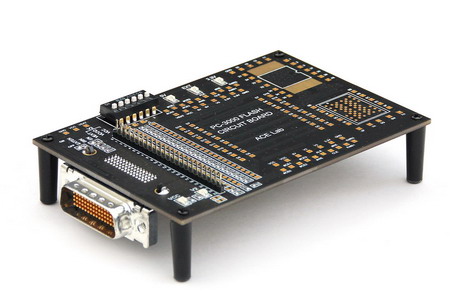 Circuit Board adapter 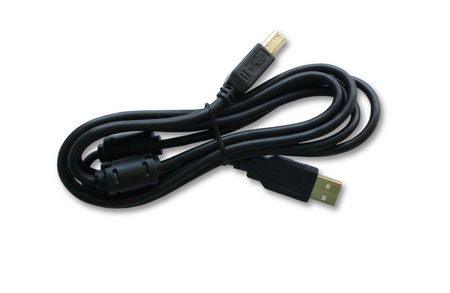 USB 2.0 Defender Cable 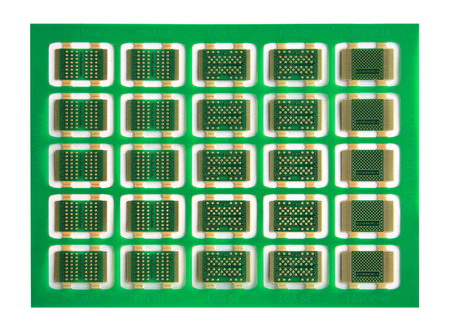 Connectors Set Connectors Set
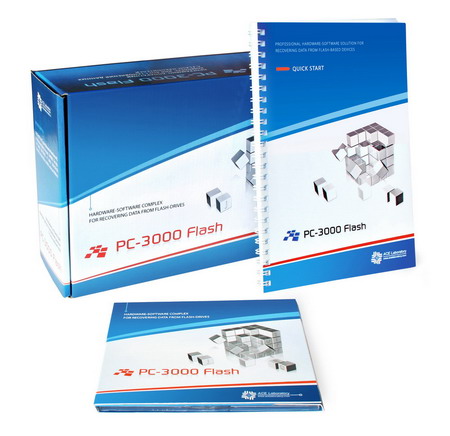
PC-3000 Flash System Functioning Principle
In a contemporary NAND-based flash drive we can roughly single out the following parts: interface, controller, memory chip, and internal drive firmware (microcode). The interface can be of any kind - SD, microSD, XD, USB 2.0 or USB 3.0 - and it is a linking unit between the controller and the 'outer world'. The controller processes the incoming data, makes some preparations, converts and mixes the data and prepares it for writing into the memory chip (backwards conversion will take place when the data is read). Memory chips store the received data (a drive may contain one or more than one memory chip). The drive's firmware operates the controller and the interface modes and it monitors the damaged memory cells of the microchips.
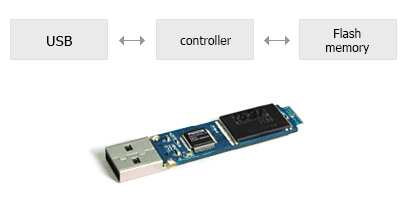 The PC-3000 Flash System allows to diagnose a drive and to determine the essence of the problem. All malfunctions of solid-state drives can be divided into two groups: logical (all units of the device and the microchip are working properly and without fail, but a problem occurs with the damaged file system, with the accidentally deleted files, with the data loss after formatting, etc. ) and physical (damage to electronic components or to firmware, resulting in a drive failure). Power stabilizers, the controller microchip or the drive's firmware located in the controller (or in the service area of the memory chips) are the most frequent reasons of failure. To resolve each of these problems, the PC-3000 Flash uses a particular set of its own tools and methods enabling to identify the malfunction and to get access to user data. The PC-3000 Flash System allows to diagnose a drive and to determine the essence of the problem. All malfunctions of solid-state drives can be divided into two groups: logical (all units of the device and the microchip are working properly and without fail, but a problem occurs with the damaged file system, with the accidentally deleted files, with the data loss after formatting, etc. ) and physical (damage to electronic components or to firmware, resulting in a drive failure). Power stabilizers, the controller microchip or the drive's firmware located in the controller (or in the service area of the memory chips) are the most frequent reasons of failure. To resolve each of these problems, the PC-3000 Flash uses a particular set of its own tools and methods enabling to identify the malfunction and to get access to user data.
Logical problems of a NAND-based driveIf logical malfunction is detected at diagnosis, the drive doesn't require disassembling – it is enough to start the PC-3000 Flash software and use the following modes:
- Drive analysis enabling to find the existing partitions and to add virtual ones
- Analysis of the partition data enabling to scan the content of the drive and to find lost files and folders. The mode can be operated basing on the file system, but it can also be started in a configuration when the file system is ignored, and in this case EVERYTHING will be found
- The mode of RAW recovery allows to recover files and then group the recovered files by types
- Sector editor. Advanced users, who possess extended knowledge of file systems structure, have an opportunity to fully restore the drive's functionality and its performance
Physical problems of a NAND-based drivePhysical malfunctions of drives occur quite frequently. One the possible causes of malfunctions is the low quality of the drive's electronic components. There can be many other causes, such as incorrect exploitation, etc. In such cases, the controller is the faulty component, whereas the user data remains intact and it is located in the non-volatile memory chips. However, in case of such malfunction, the data can't be read in the standard mode via the device's interface. To resolve such problems, the PC-3000 Flash System uses a complex unit of software and hardware parts. The System's hardware part makes it possible to read any NAND-memory chips (at first, memory microchip should be unsoldered out of the drive and inserted into the reader of PC-3000 Flash). As soon as a file containing the data from memory chips is obtained, you can further work directly with the data you have read. It is almost impossible to damage the data, and so it is absolutely safe to use the PC-3000 Flash System, as you can go back to the initial dump of each microchip at any time. At the next stage, a set of mathematical tools and methods is used which enables to emulate the operation algorithm of almost any drive controller.The software component encompasses the following features and functions:
- A reference base of memory microchips containing information about hundreds of memory microchips
- A resource base required to most controllers operation
- About 25 different preparation techniques emulating the controller transformations
- Around 50 different algorithms of obtaining a full-featured image of the file system
- View mode for service information
- Data view mode in bitwise graphic representation
- Several methods and algorithms to improve the previously built image
- An integrated compiler enabling you to write your own scripts to work with data
- Numerous other useful features
- Many other features and functions
All other modes and tools of the PC-3000 Flash provide a possibility to automatically determine the operation parameters and to apply them. To make the PC-3000 Flash easier to use, three ways of data recovery automation have been implemented:
- Controller-based recovery, an off-line base of possible steps for recovering user data
- A comprehensive method of analysis, a mode for mathematical calculation of the likeliest data recovery steps
- A Global Solution Centre – the website containing a base of over 4,500 solution scripts. When you apply these solutions, you get an opportunity to recover data “in one click”
Flash drives in the form of monolithsA large percentage of contemporary NAND-based flash drives is made up by monolith drives (System on Chip, or Embedded Solution), where the controller, the memory microchips and all the passive elements are placed inside one physical case.
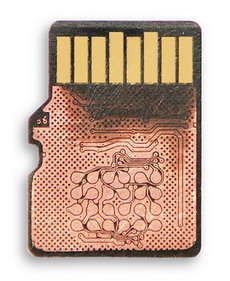
The only external port for this kind of flash drives is the interface port which it is intended for (USB, SD, MS, Micro SD, etc.). If this kind of device has a malfunction and if it is impossible to work through the standard interface, there is a way of getting access to the internal memory chips inside the monolith device, using soldering to special pinouts situated on the circuit board or by direct soldering to the traces of the circuit board. Specifically for such tasks, the PC-3000 Flash System has a Circuit Board adapter, designed to make it more convenient to connect the monolith to the PC-3000 Flash System reader.
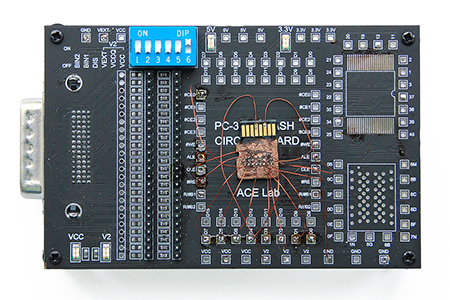
The monolith library is regularly updated and it contains information about the soldering pinouts for getting connected to the monoliths' memory chips.
Adapters enhancing the capabilities of the PC-3000 Flash
Due to the steady development of the technologies and the technological processes, NAND memory chips are implemented in the new form factors and cases that meet the requirements of density and easy installation to the end devices. To work with the latest memory chips the PC-3000 Flash has the new adapters capable to deal with the modern cases. LGA/TLGA-52 (14x18 and 12x17) adapters
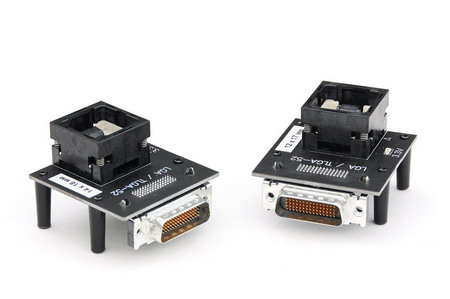
Adapters are based on the specialized ZIF panels, providing a convenient and secure method of installing memory chips. Adapters are fully compatible with the PC-Flash Reader version 3.0 and support the chips in LGA/TLGA-52 case. The difference is the width of the memory chip packages - 14x18 mm and 12x17 mm. It is possible to center manually a narrow chip (12x17 mm) inside the socket of LGA/TLGA-52 (14x18) adapter. The adapter has a power supply LED- indicating the voltage supplied to the memory chip.
BGA-152 adapter  The adapter is based on the specialized ZIF panel, providing a convenient and secure method of installing memory chips. The adapter is fully compatible with the PC-Flash Reader version 3.0 and supports the chips in BGA-152/132 case. BGA-132 chips require the additional alignment, as their body is 2 mm less in the width. Two voltage indicators for every power circuit (core supply Vcc and buffer supply VccQ) allow to monitor the power voltage supply of the every circuit using the additional power supply adapter. When there is no such power supply adapter, both circuits are connected to the PC-Flash Reader. The adapter is based on the specialized ZIF panel, providing a convenient and secure method of installing memory chips. The adapter is fully compatible with the PC-Flash Reader version 3.0 and supports the chips in BGA-152/132 case. BGA-132 chips require the additional alignment, as their body is 2 mm less in the width. Two voltage indicators for every power circuit (core supply Vcc and buffer supply VccQ) allow to monitor the power voltage supply of the every circuit using the additional power supply adapter. When there is no such power supply adapter, both circuits are connected to the PC-Flash Reader.
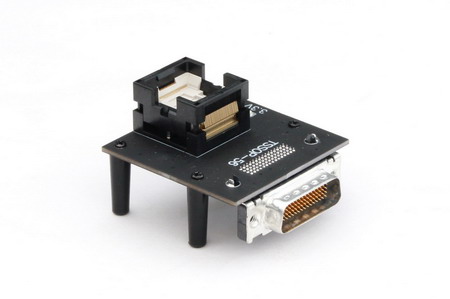
The adapter is based on the specialized ZIF panel, providing a convenient and secure method of installing memory chips. The adapters is fully compatible with the PC-Flash Reader version 3.0 and supports the chips in TSSOP-56 case. LED allows you to visually monitor the voltage supply submitted to the memory chip. Circuit Board adapter
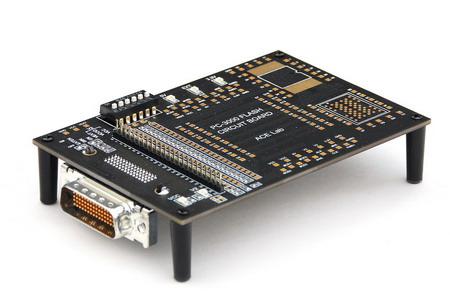
Now there is a high percentage of monoliths (Embedded Solution, SoC) where one physical package has memory chips, integrated controller to perform all the basic functions and all the passive elements. Thus, the only one external connector for such , , , , , , , , , , , storage device is the interface connector intended for such drives (SD, MS, Micro SD etc.). When such drive is broken and it is impossible to work through the standard interface, you can get an access to the internal memory chips using the individual technological pin outs (if any), located on the monolith circuit board or soldering straight to the topology tracks of the circuit board when you have the information about pinmaps. To perform such tasks, a specialized PC-3000 Flash Circuit Board adapter has been developed, which is intended not only for the comfortable installation works and connection to the PC-3000 Flash, but also for the analytical work to define the output destination of the new unstudied chips.
The main features of the Circuit Board adapter:
- All signals are buffered, eliminating possible parasitic interference of the readable chip. If necessary, the buffer elements can be turned off while the work with wired chip is carried out directly
- Used buffers have double power supply, allowing to set the voltage level to read the memory chips or the monolith chips, independently of the main Reader. It enables to change the memory chips voltage supply, which in some cases can be useful to work with the "problem"memory chips, and also when the voltage value of the readable chip differs from the voltage value of the main Reader. The allowed range of power supply voltage values for the readable chip or monolith drive is 1.2 - 3.6 V
- Mounting place has enough size to put a chip which makes the operation easier and the life cycle of the adapter is maximized. Each signal is repeatedly duplicated and the signal placement takes into account the characteristics of their usage
- The adapter has LEDs allowing to check the state of all voltages involved in the adapter operation
- The adapter allows to use any external power supply device as a power source for readable memory chips or the drive in the monolithic implementation. In this case, the power supply management can be done in software or manual modes
- The adapter contains all the necessary elemental and topological features to help you perform the pinouts assignments using the logic analyzer which is wired into the mounting field of the chip. In this case, all signals are buffered, eliminating the influence of the analyzer probes on the internal bus of monoliths
- The adapter has slots for TSOP-48 and TLGA-52 chips, with the convenient location of all VSP pinouts which allows you to use the adapter for reading these chips which have specific requirements for work incompatible with the standard PC-3000 Flash adapters. For example, local heating or cooling of the damaged chips for better reading
- The adapter has the implemented patch panel that enables the flexible re-commutation of the leads placed in the mounting field of the chip and PC-Flash Reader leads, without re-soldering the wired chip. It is useful when working with the analyzer when the pinout assignment can be changed repeatedly during the research process
Example of using Circuit Board Adapter
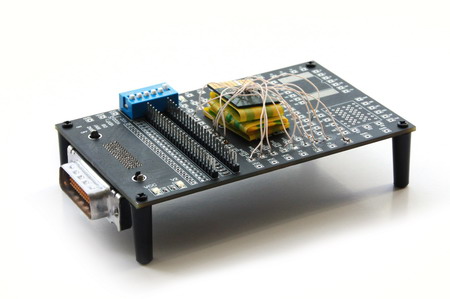
Specialized resource is available for the PC-3000 Flash users - Monoliths library ( www.pc3000flash.com/solbase/monochips.php), which contains a fresh updated database with the known output destination of the monoliths.
Power Control Adapter
The research and development on reading data from the damaged NAND-Flash microchips take a great deal of time in ACE Lab company. The experiments have proved the fact of the positive influence of supply voltage on the quality of reading some up-to-date “problematic” microchips like MLC and TLC, as many bit errors are appearing during the memory chip reading process. There is no way to get rid of these errors and it is impossible to use the passive and statistic methods to improve the quality of reading.
As a result of our research, we have developed a specialized Power Control Adapter. Its concept and capabilities encompass the readiness to solve not only many today tasks but also meet the future challenges.
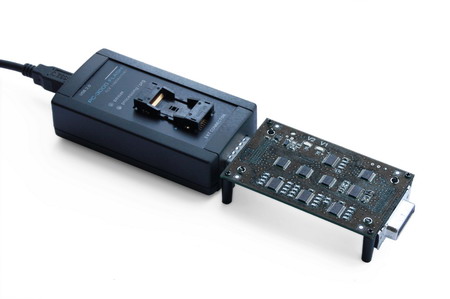 Technical features of the new Power control adapter: Technical features of the new Power control adapter:
- Voltage range: 0.8V – 5V
- Change step: 0.05V
- Number of channels: 2
- Number of sources: 4, by 2 in each channel (independently switched)
- Type of sources: 2 linear transducers, 2 impulse transducers
- Current limiting possibilities: 100mA, 150mA, 200mA, 300mA, 500mA, 1.5A, without limitation
- The maximum number of memory chip pins accounted for an arbitrary switching: 33 Voltage indicators for each channel
- Delay in buffer elements: < 3 ns
Capabilities of the new Power control adapter:
- The capability to smoothly and independently change the power supply voltage at the external boundary pins of the memory chip core (Vcc) and at the pins of the input-output buffer (VccQ) supply circuit

The capability to change the voltage level not only in the currently known power supply pins of memory chip, but also in any of the VSP (Vendor Specific Point), NC (not connected) and RESERVED pins. A fully software pin configuration control is done at the convenient intuitive interface
- Full integration of power control into the whole reading and readout modes of the PC-3000 Flash allows to make a new special reading modes for the “problematic” TLC chips
- The capability to select the optimal voltage for readout and its combination with the variable voltage of Read Retry command and the comprehensive principles allow to get the best possible result of reading with “problematic” TLC chips with a lot of bit errors or unreadable pages
上一条:
SafeMobile盘石手机取证分析系统
| 下一条:
合肥晨天数据安全科技有限公司营业执照
|



















